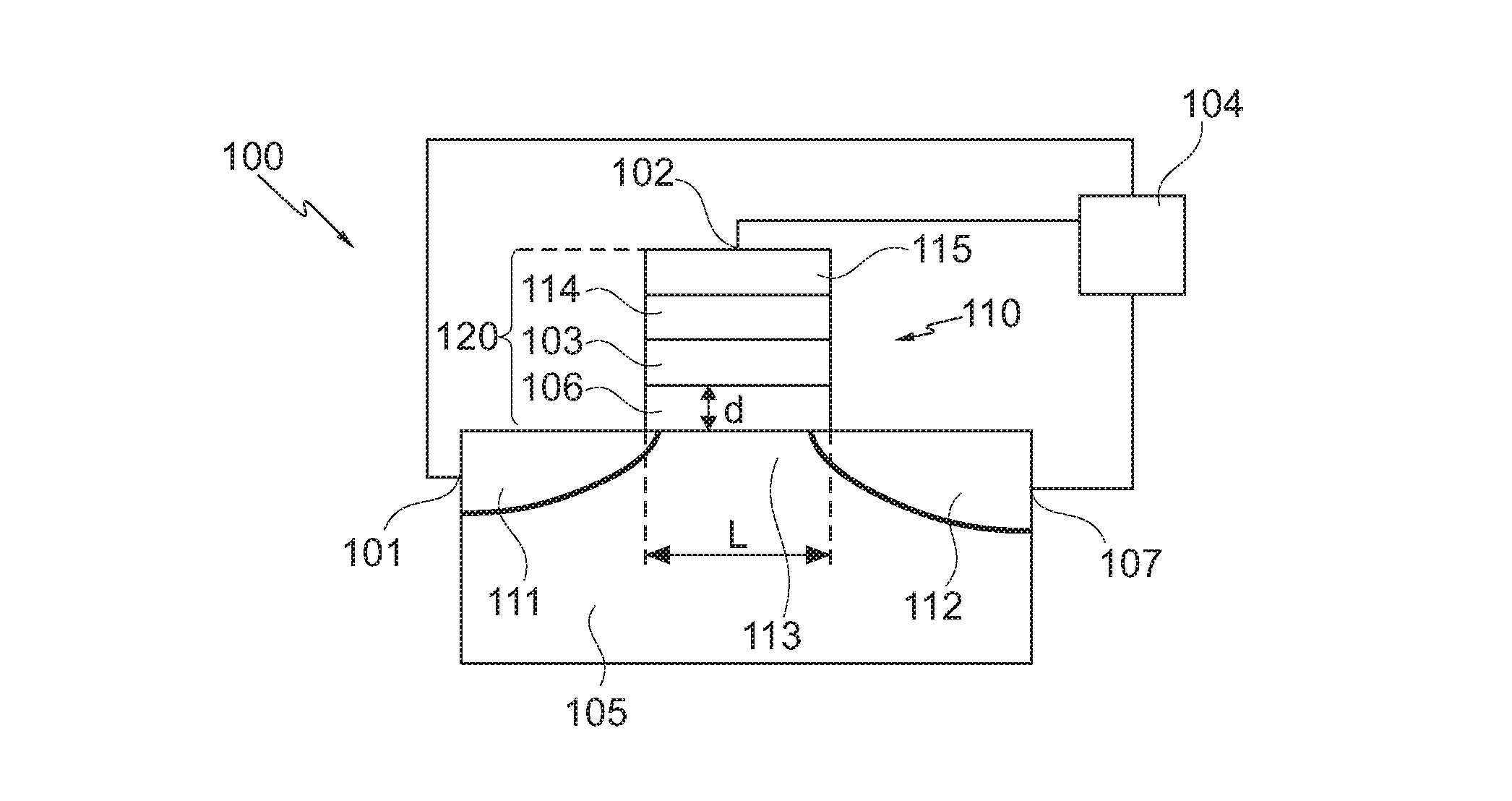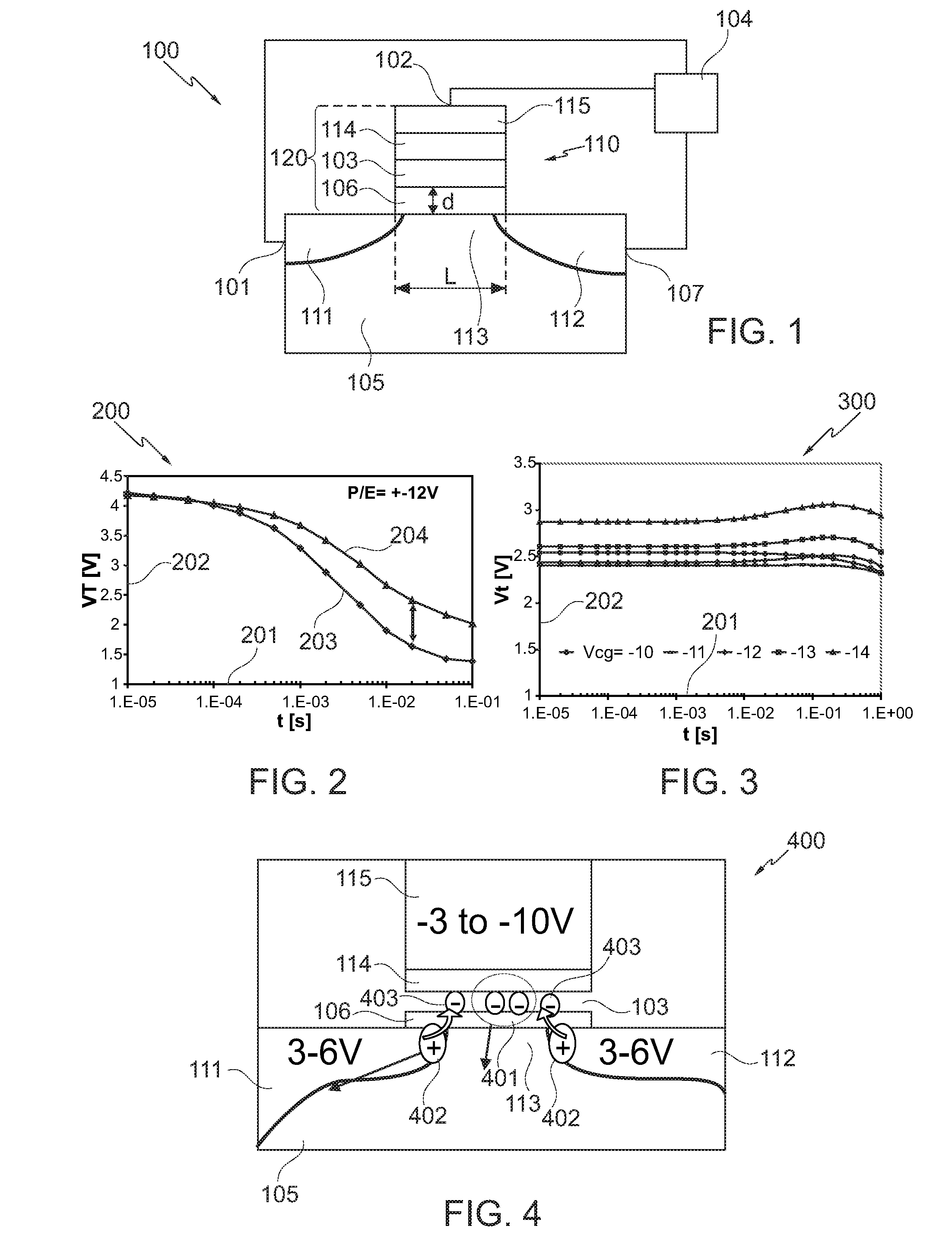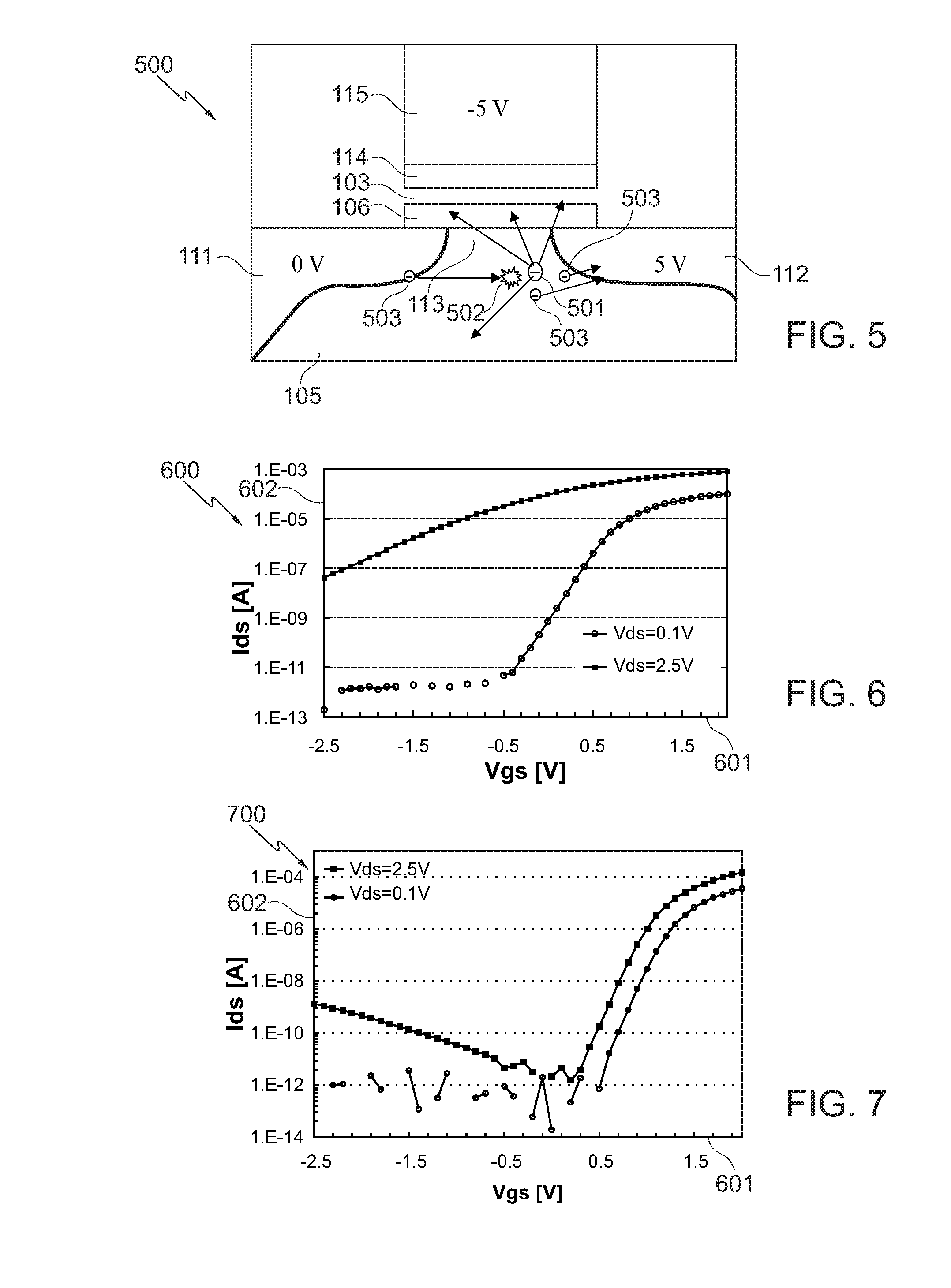Memory cell, a memory array and a method of programming a memory cell
a memory cell and array technology, applied in the field of memory cells, can solve the problems of insufficient data retention of sonos memory cells, inability to increase the thickness of the bottom silicon oxide of a sonos transistor above approximately 2.5 nanometers (nm), and achieve the effect of fast and efficient mass erasure of a complete memory produ
- Summary
- Abstract
- Description
- Claims
- Application Information
AI Technical Summary
Benefits of technology
Problems solved by technology
Method used
Image
Examples
Embodiment Construction
[0078]The illustration in the drawing is schematical. In different drawings, similar or identical elements are provided with the same reference signs.
[0079]In the following, referring to FIG. 1, a memory cell 100 according to an exemplary embodiment of the invention will be explained.
[0080]The memory cell 100 comprises a first electric terminal 101 serving as a first source- / drain terminal, a second electrical terminal 102 serving as a gate terminal, a charge trapping structure 103 configured as a silicon nitride layer and a programming unit 104. The programming unit 104 may be an integrated circuit or may be a voltage control device provided externally of s silicon substrate 105 of the memory cell. The programming unit 104 is adapted for applying a first electric potential to the first electric terminal 101 to accelerate electrons in a channel region 113 to thereby generate positively charged holes by impact ionisation of the accelerated electrons in the substrate 105. The programm...
PUM
 Login to View More
Login to View More Abstract
Description
Claims
Application Information
 Login to View More
Login to View More - R&D
- Intellectual Property
- Life Sciences
- Materials
- Tech Scout
- Unparalleled Data Quality
- Higher Quality Content
- 60% Fewer Hallucinations
Browse by: Latest US Patents, China's latest patents, Technical Efficacy Thesaurus, Application Domain, Technology Topic, Popular Technical Reports.
© 2025 PatSnap. All rights reserved.Legal|Privacy policy|Modern Slavery Act Transparency Statement|Sitemap|About US| Contact US: help@patsnap.com



